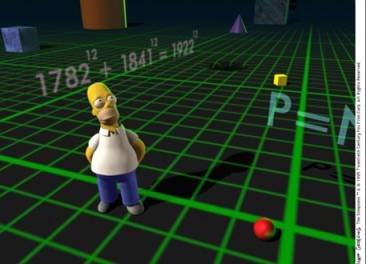Near misses in Fermat’s last theorem
Posted by: Gary Ernest Davis on: March 2, 2011
 Fermat’s last theorem, proved by Andrew Wiles, states that there are no positive whole number solutions for
Fermat’s last theorem, proved by Andrew Wiles, states that there are no positive whole number solutions for to the equality
for
Yet in an episode of The Simpson’s it was noted that , apparently contradicting Fermat’s last theorem.
Of course this is not a contradiction because is not actually equal to
.
So why did The Simpson’s episode say these two numbers were equal?
Well,
while
So, starting from the left we see that the digit in
is a 9, while for
it is an 8.
David Radcliffe (@daveinstpaul ) tweeted:
3 Responses to "Near misses in Fermat’s last theorem"
38305^3 + 51762^3 = 57978^3
49193^3 + 50920^3 = 63086^3
I think I found a set of formulas which work to find the series of best “near solutions” to Fermat’s Last Theorem out to infinity. I can’t be sure … just have an ordinary PC and Lotus spreadsheet which is accurate
only to 18 digits. Anyone who would like to see the formulas can email me … I’ll attach my final spreadsheet, which does work for 55 equations in a row … I’m sure of that. HH


January 26, 2013 at 9:41 pm
You can find thousands of near-misses by solving the following equation:
A^n+B^n = C^n + !
or A^n+B^n = C^n – !
The difference is always !. I tested these up to n = 1000 and these still hold.
Surely based on asymptotic argument, these are counter-examples to FLT?